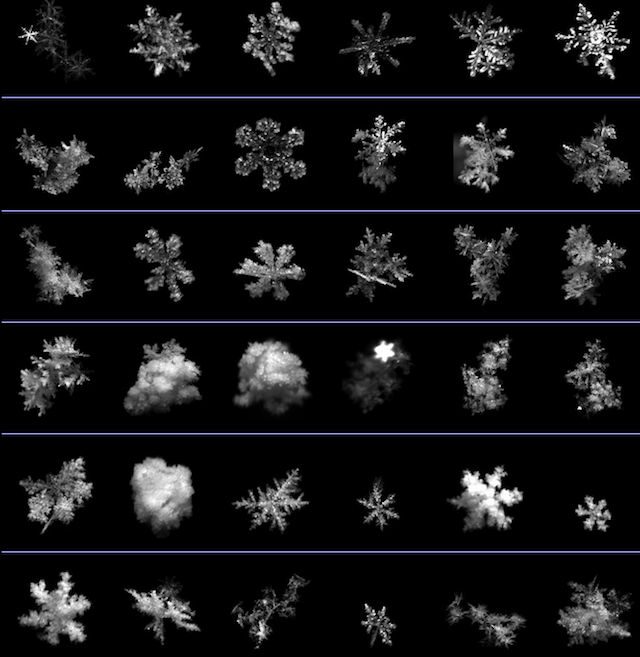These are among the world’s first 3D photographs of untouched snowflakes
Researchers at the University of Utah have teamed up with the NSF to understand better just how fast and in what form snowflakes truly fall. To do it, they’re using a high-speed Multi-Angle Snowflake Cam (aka “MASC”) to capture real-time 3D images of snowflakes in freefall at Utah’s Alta Ski Area.
The study is reportedly the first of its kind, and it’s already turning up some really interesting results.
Writes John Bohannon for Science NOW:
The classic image of a snowflake is a fluke. That flat, six-sided crystal with delicate filigree patterns of sharp branches occurs in only about one in every 1000 flakes. And a snowflake seen in 3D is another beast entirely. Researchers have developed a camera system that shoots untouched flakes “in the wild” as they fall from the sky. By grabbing a series of images of the tumbling crystals—its exposure time is one-40,000th of a second, compared with about one-200th in normal photography—the camera is revealing the true shape diversity of snowflakes.
Above is a tiny cross section of the variety of snowflakes MASC has photographed in free-fall so far. Check out tons more at the Snowflake Stereography and Fallspeed home page, or – when it’s snowing – at Alta Ski Area’s Snowflake Showcase, where you can watch a live feed of snowflakes falling in real time.
